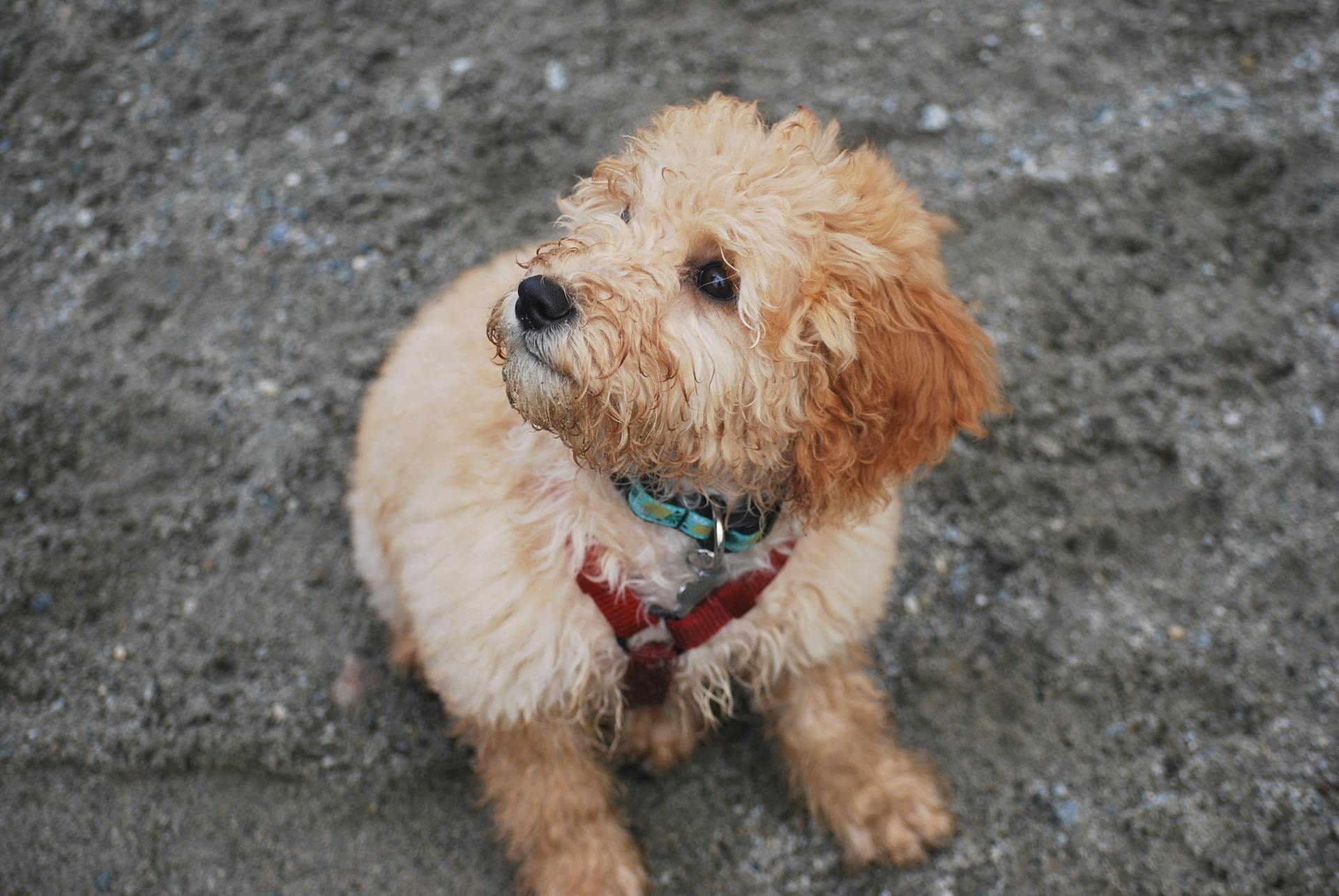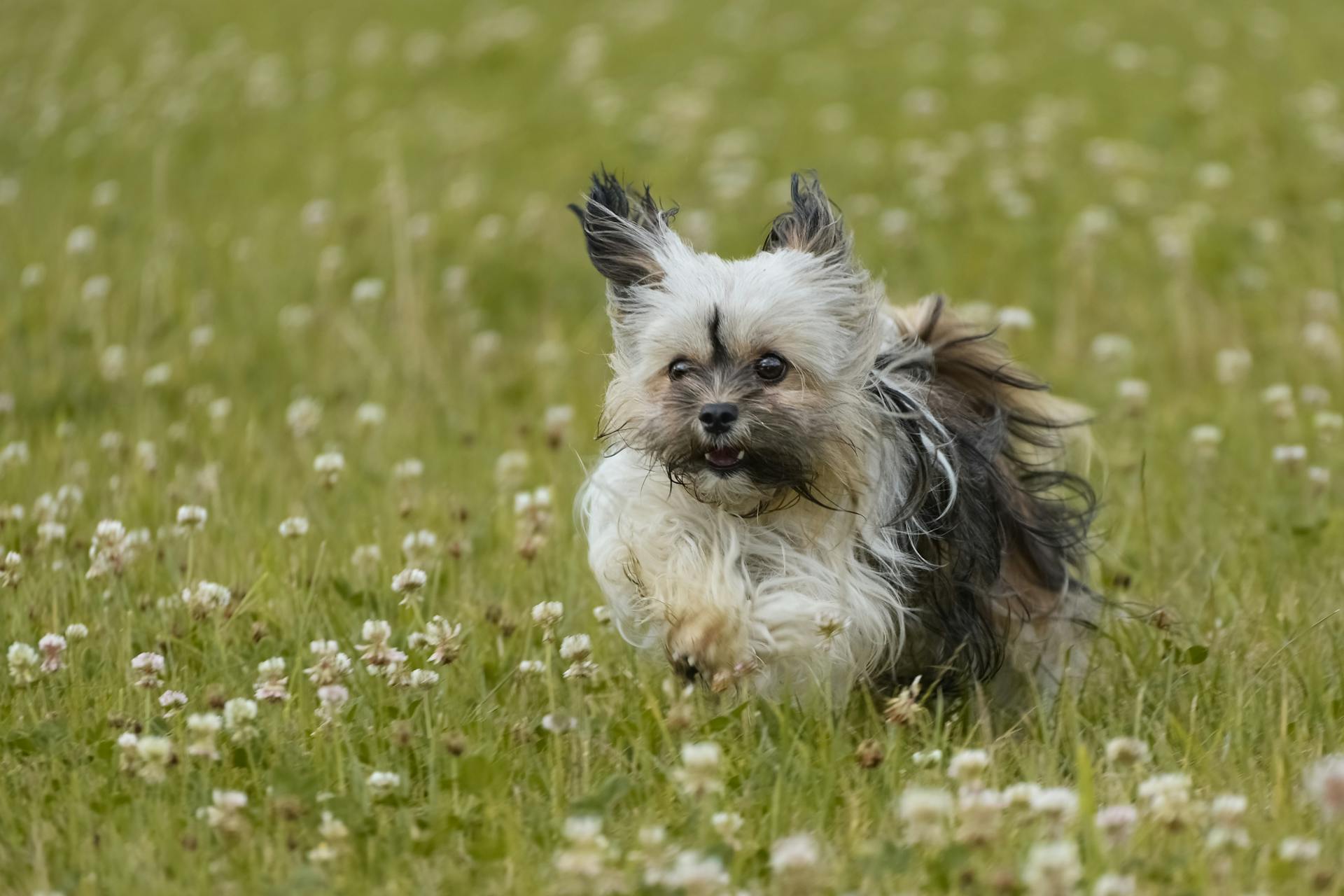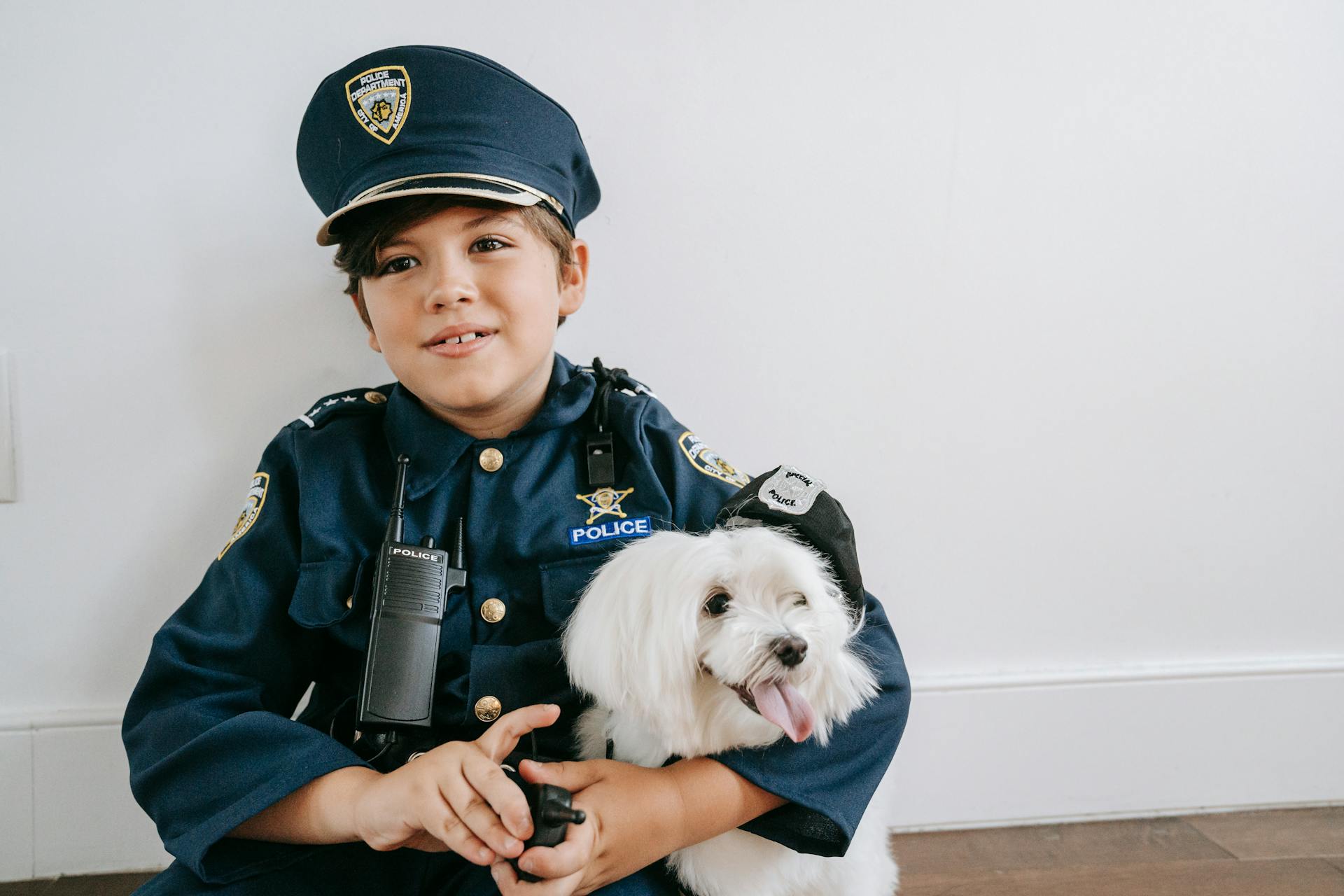
Police dogs can detect a wide range of scents to aid in investigations, from narcotics to explosives. Their incredible sense of smell is a valuable asset in keeping our communities safe.
With their highly developed olfactory system, police dogs can sniff out substances like cocaine, heroin, and methamphetamine, helping to disrupt drug trafficking operations. Their keen sense of smell can also detect the presence of explosives, including TNT and C-4.
In addition to detecting illicit substances, police dogs can also identify specific individuals, such as suspects in a crime or missing persons. This is made possible by the unique scent of an individual's skin and clothing.
For your interest: What Dog Has the Best Sense of Smell
Dog's Sense of Smell
Dogs have an incredible sense of smell that's up to 10,000 times stronger than humans.
Their sense of smell is powered by up to 300 million olfactory receptors in their noses, compared to only 6 million in humans.
This means police dogs can detect tiny amounts of substances like narcotics and explosives.
Expand your knowledge: Dog Sense of Smell vs Human
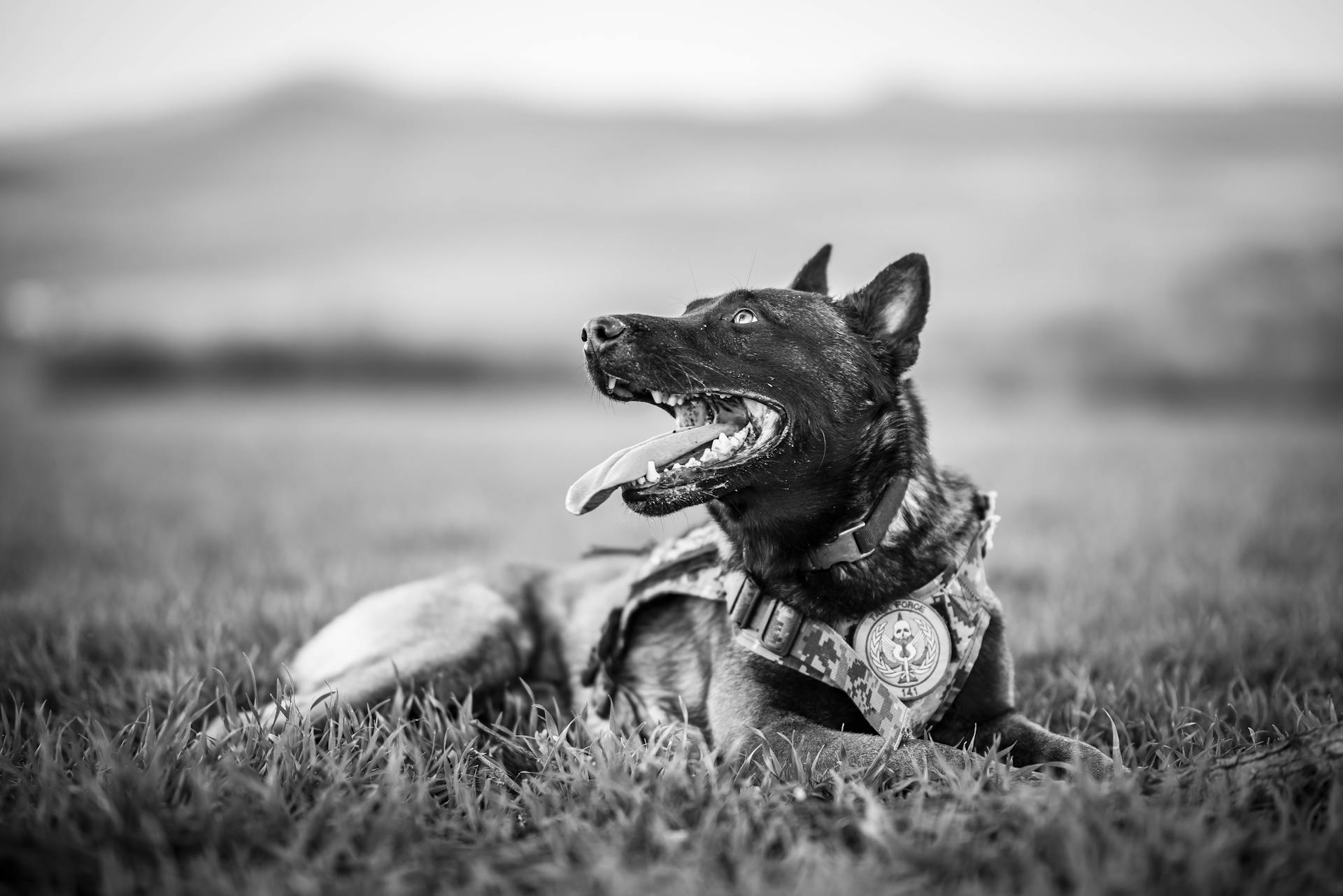
Their sense of smell is also highly specific, allowing them to distinguish between different scents and track specific targets.
A single sniff can give a police dog a wealth of information, including the type of substance, its age, and its location.
Their keen sense of smell is also what allows them to detect changes in their environment, like the presence of a suspect or a hidden object.
Police dogs can even detect scents that are hours or even days old, making them invaluable tools in investigations.
Detection Capabilities
Police dogs can detect a wide range of scents, including narcotics and explosives. Their sense of smell is so powerful that they can even detect residual particles of narcotics that are left behind, like leftover odor from pot that's been ground into the carpet.
Their training is rigorous and costly, taking up to three years to complete, and most dogs specialize in one area of expertise. This means they're not just sniffing out drugs, but also specific types of drugs like marijuana, cocaine, and heroin.

Police dogs can identify the scents of bomb-making chemicals, which is why they're increasingly in demand since 9/11. They can also detect accelerants used in arson cases.
The breeds selected for sniffer dog training, such as German shepherds, Belgian Malinois, and Labrador retrievers, have an impressive sense of smell and strong hunting instincts. This drive to seek out what they've been trained to find is what makes them so effective at detecting drugs and other scents.
Detection dogs don't actually find the objects their handlers are searching for - they just give off a signal to show that the contraband's scent is there. This means that sometimes, all that's there is the scent, but not enough of the substance to convict someone.
Some states retest sniffer dogs and their handlers every three years to ensure they're detecting drugs accurately. They're tested on a strict pass or fail basis, rather than by success rate.
Take a look at this: How Long Can a Dog Smell Another Dogs Scent
Detector Dogs
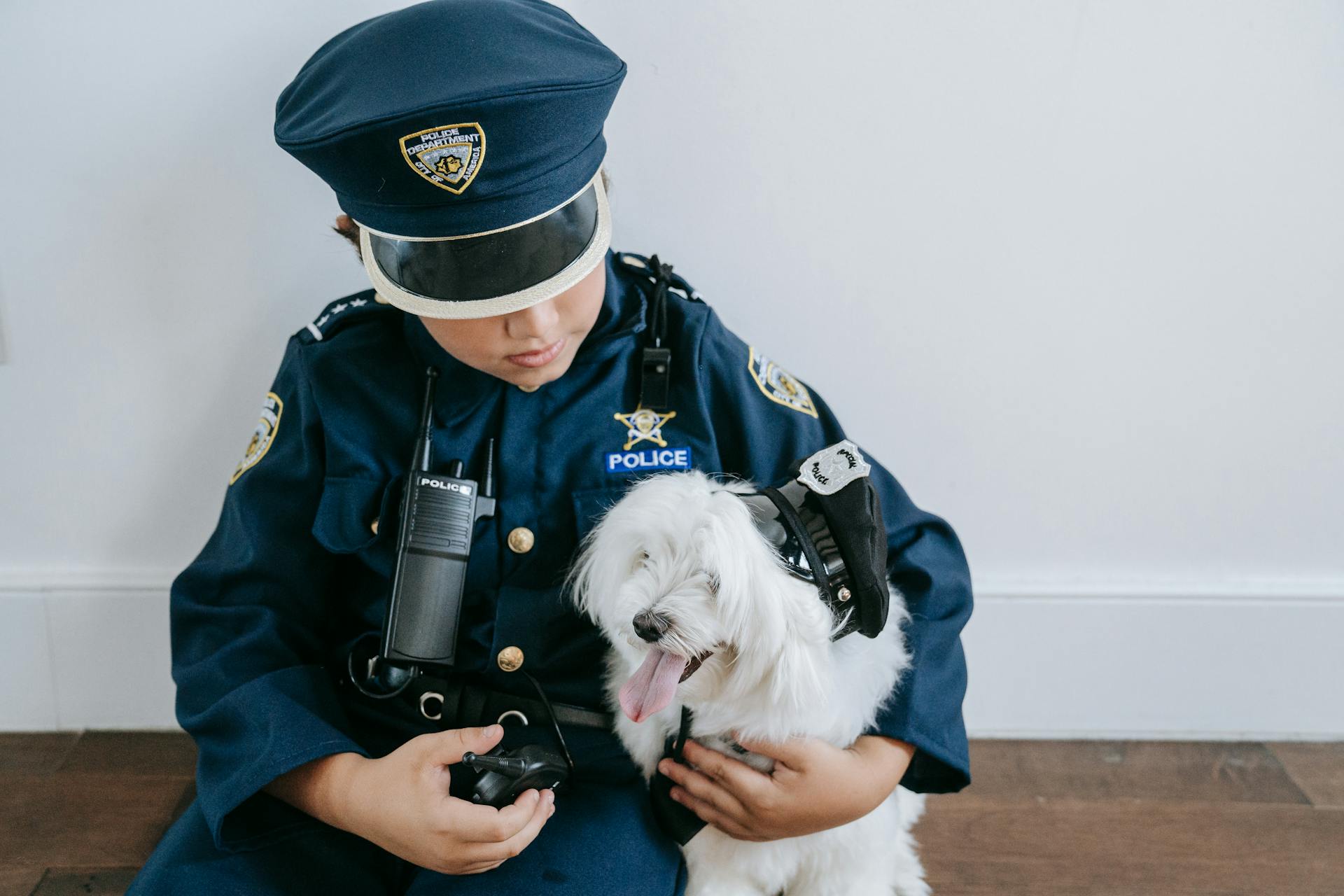
Detector dogs have proven their effectiveness in searching for humans, both alive and dead, with some dogs able to track a dead body in just a few minutes.
These dogs can be trained to detect a wide range of scents, including narcotics, explosives, and blood. Narcotics dogs can identify the smells of drugs like marijuana, cocaine, heroin, and crystal meth.
Detector dogs are often used in airports, train stations, and at large-scale events to sniff out narcotics and explosives. They can even identify certain accelerants used in arson cases.
In some cases, detector dogs have been found to be unreliable, with a study showing that only 44 percent of sniffer dogs' positive signals led to the actual discovery of drugs or paraphernalia.
The breeds selected to train as sniffer dogs, such as German shepherds, Belgian Malinois, and Labrador retriever breeds, feature an impressive sense of smell and strong hunting instincts.
On a similar theme: Can Sniffer Dogs Smell Pills
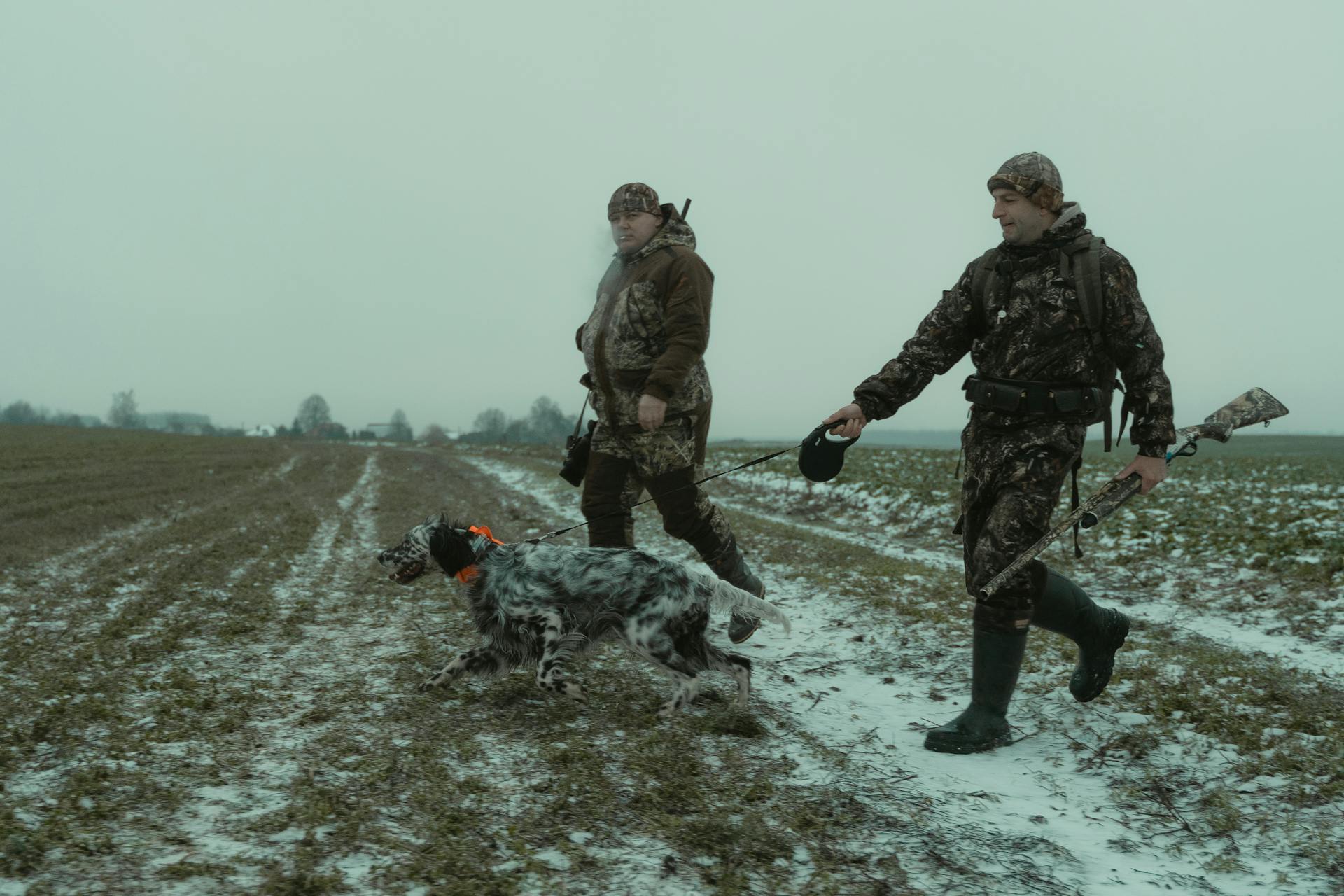
These dogs don't actually find the objects their handlers are searching for, they just give off a signal when they detect a scent. This signal can be as simple as scratching the ground or sitting down.
Some states require regular testing of sniffer dogs to ensure they continue to detect drugs accurately. These tests are typically conducted on a strict pass or fail basis, with the team being retested together every three years.
Detection Tasks
Detector dogs can search for a wide range of scents, including those of humans, both alive and dead. Their great efficiency has been demonstrated in several situations, even in searching bodies of water.
Detector dogs can scour a very large area in a very short time, making them a considerable asset in various detection tasks. They are able to pick up scents through objects or on moving people, even when attempts have been made to disguise the scent.
Some police dogs are trained to detect drugs, explosives, or blood, and can even alert police to the presence of these substances through a signal, such as scratching the ground or sitting down.
Canine Detection in Fire Investigations
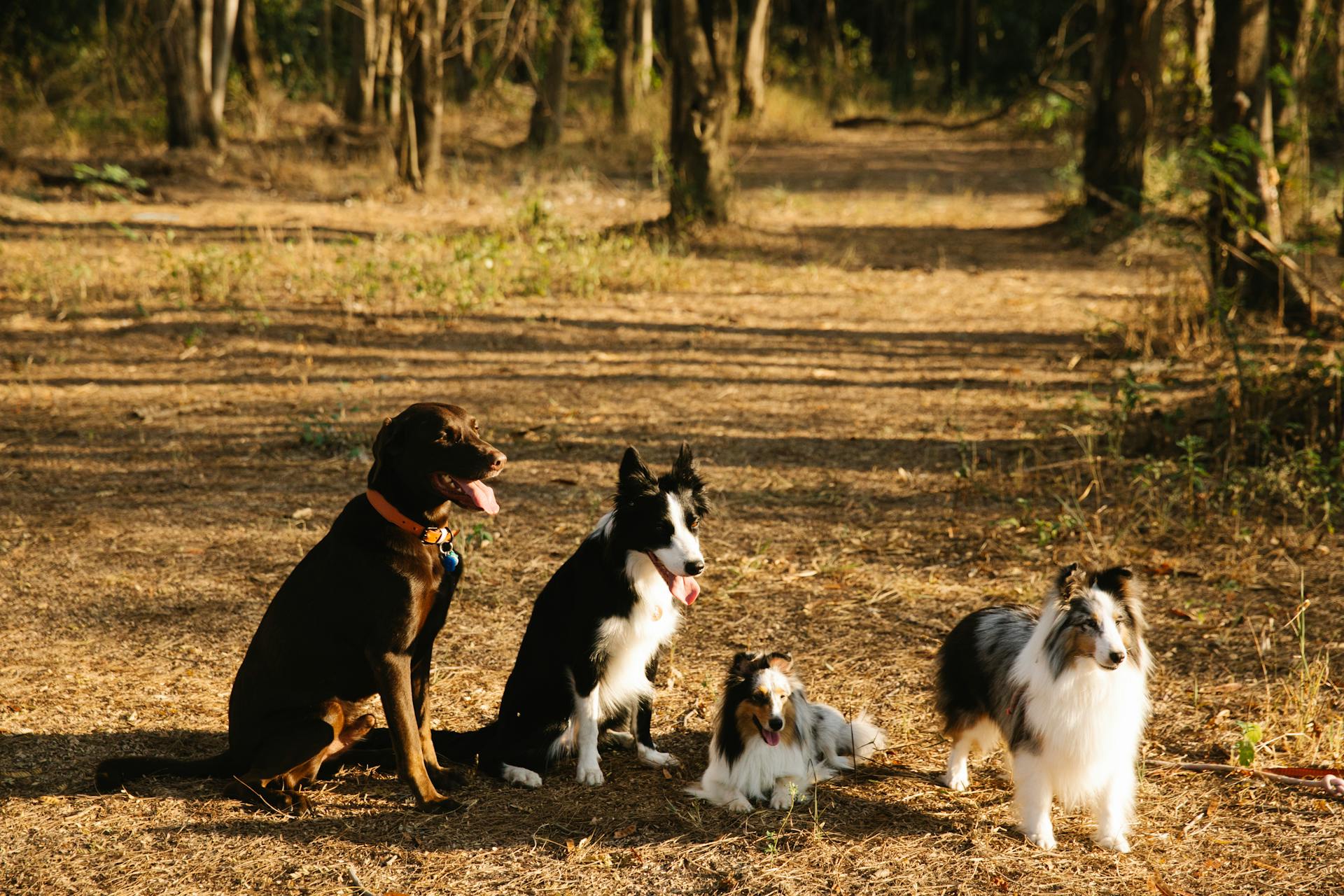
Canine detection in fire investigations is a valuable tool in determining the cause of a fire. Dogs have been trained to detect the presence of accelerants at fire sites.
Their keen sense of smell allows them to identify areas in the rubble where there are traces of accelerants. This helps investigators to pinpoint the source of the accelerant.
Subsequently, samples can be taken from these areas for analysis, which aids in solving the investigation more efficiently.
Drugs, Canine Sniffs
Detection dogs are incredibly effective at sniffing out drugs and explosives. They can detect scents through objects or on moving people, even when attempts have been made to disguise the scent.
Narcotics and bomb detection dogs are typically trained to identify specific odors, such as those of marijuana, cocaine, heroin, and crystal meth. They can also detect bomb-making chemicals and accelerants used in arson cases.
The breeds selected for sniffer dog training, such as German shepherds, Belgian Malinois, and Labrador retrievers, have a strong sense of smell and hunting instincts. This drive to seek out what they've been trained to find is what makes them so effective, but it's not behind false detections.
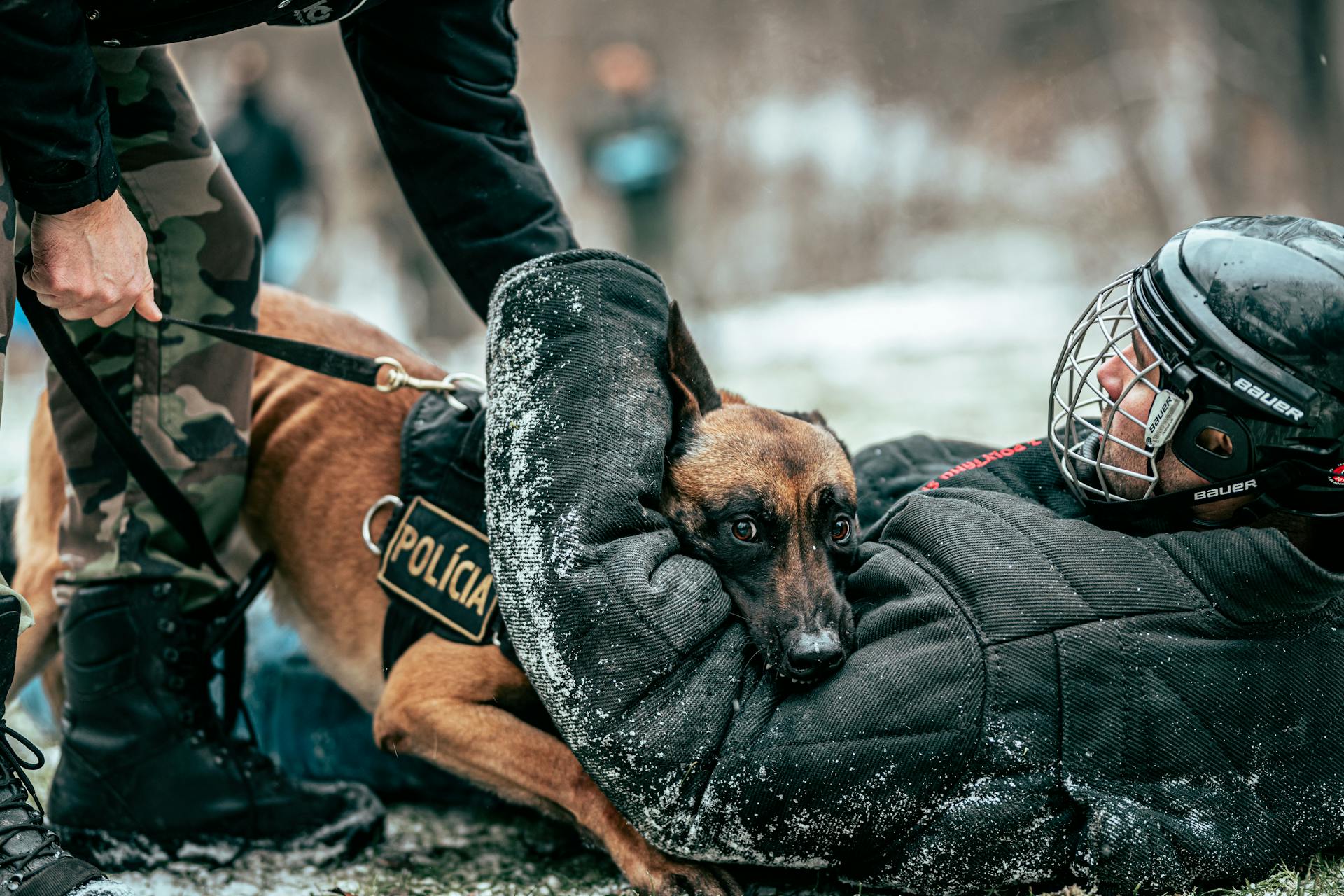
In fact, a study by the Chicago Tribune found that only 44% of sniffer dogs' positive signals led to the actual discovery of drugs or paraphernalia. However, states have varying certification and follow-up testing requirements to ensure that sniffer dogs continue to detect drugs accurately.
Here are some key facts to keep in mind when dealing with drugs and canine searches:
- A temporary detention of luggage for a trained dog to sniff it does not constitute a search.
- Walking a narcotics detection dog around the exterior of a car does not constitute a search for drugs.
- A canine sniff performed for drugs on the exterior of a car during a lawful traffic stop does not infringe on the defendant's privacy expectations.
- Absent probable cause, the drug canine sniff must be done during the course of the routine traffic stop to be valid.
Specific Detection
Police dogs can detect a wide range of substances, including narcotics, explosives, and blood. They can even identify the scent of accelerants used in arson cases.
Narcotics dogs are trained to detect specific odors like marijuana, cocaine, heroin, and crystal meth. Bomb detection dogs, on the other hand, learn to identify the smells of certain common bomb-making chemicals.
These dogs typically work off-leash in close contact with their handlers, who rely on their keen sense of smell to support police activities. The breeds commonly used for sniffer dogs, such as German shepherds and Labrador retrievers, have an impressive sense of smell and strong hunting instincts, which makes them highly effective in detecting specific substances.
Cadaver Detection
Detector dogs have proven their effectiveness in searching for humans, both alive and dead. Their great efficiency has been demonstrated in several situations.
A single dog can track a dead body in a few minutes, which is a significant improvement over human teams that can take weeks without finding anything. This makes it possible to advance investigations.
Detector dogs can even search bodies of water, showing their versatility in different environments.
Narcotics and Explosives Detection
Narcotics dogs are trained to identify the smells of drugs like marijuana, cocaine, heroin, and crystal meth.
These dogs are often seen in airports, train stations, and at large-scale events, and typically work off-leash in close contact with their handlers.
Bomb detection dogs, on the other hand, are trained to identify the odors of certain common bomb-making chemicals.
After 9/11, bomb detection dogs were increasingly in demand, and some dogs are even trained to identify accelerants used in arson cases.
Detection dogs do not actually find the objects their handlers are searching for – they just give off a signal, such as scratching the ground or sitting down, to show that the contraband's scent is there.
The breeds selected to train as sniffer dogs, such as German shepherds, Belgian Malinois, and Labrador retrievers, feature not only an impressive sense of smell, but also strong hunting instincts.
Some states retest the dogs and their handlers once every three years, while others require annual or biannual tests.
The dogs' strong desire to hunt drives them to seek out what they've been trained to find, so they do not falsely signal in order to get a reward.
Frequently Asked Questions
What scents throw off sniffer dogs?
Sniffer dogs can be thrown off by strong scents like sunscreen, coffee grounds, meat, and deer urine, but their effectiveness is often debated and may not guarantee a successful evasion
How far down can police dogs smell?
Police dogs can detect scents from remarkable depths, including up to 40 feet underground and 70 feet under mudslides. Their incredible sense of smell can even penetrate through several inches of concrete.
Can police dogs smell phones?
Police dogs can be trained to detect concealed devices like phones and tablets through specialized training programs. With the right training, these dogs can help sniff out hidden electronic devices.
Sources
- https://k9maitrechien.ca/en/what-can-dogs-detect-2/
- https://www.akc.org/expert-advice/news/how-a-dogs-nose-supports-police-work/
- https://www.police1.com/police-products/k9/k9-training/articles/when-does-drug-dog-odor-become-residual-5MI27HxiHFyk9afl/
- https://www.livescience.com/9215-police-dogs-sniff-drugs.html
- https://bhattchicagodefenselaw.com/chicago-criminal-defense-attorney/drug-lawyer/drugs/
Featured Images: pexels.com

